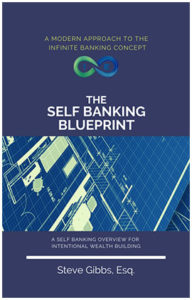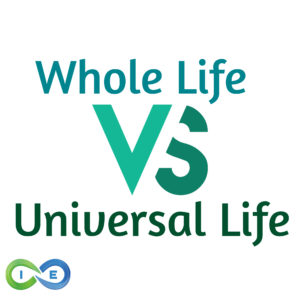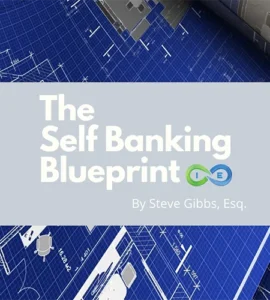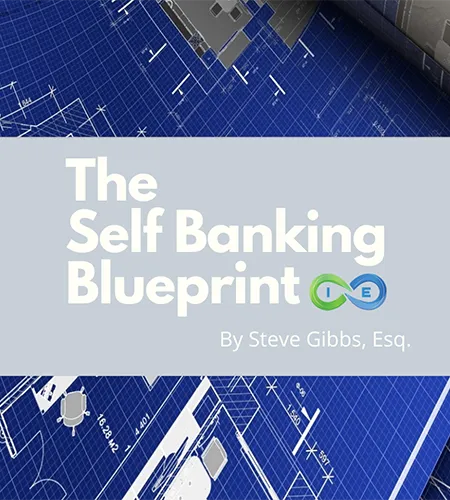Table of Contents
Whether you’re leaning towards the predictable nature of Whole Life Insurance or the potential higher returns of Indexed Universal Life Insurance (IUL), this comprehensive guide offers valuable insights and expert recommendations to help you select the policy that best aligns with your unique financial needs and long-term goals.
Understanding Cash Value Life Insurance
Both indexed universal life insurance and whole life insurance are forms of permanent life insurance, also known as cash value life insurance. The term cash value refers to the distinctive feature where a portion of your premium payment goes into a cash value account that grows over time and can be accessed through withdrawals and policy loans.
Cash value life insurance serves two primary purposes:
- Lifetime Death Benefit Protection: Unlike term insurance which expires after a set period, permanent insurance provides lifelong coverage as long as the policy remains in force.
- Tax-Advantaged Savings Component: The cash value grows tax-deferred and can be accessed tax-efficiently through policy loans and withdrawals.
Let’s examine how these two popular permanent life insurance options compare across various important factors.
Indexed Universal Life (IUL) Explained
Key Features of IUL
➽Indexed universal life insurance policies offer a unique combination of death benefit protection and cash value growth linked to market indices, such as the S&P 500. However, unlike variable universal life insurance, IULs do not directly invest in the stock market.
➽Market gains are used to determine IUL policy growth, but returns are subject to a participation rate (the percentage of index gains credited to the policy) and cap rate (the maximum return that can be credited regardless of actual index performance).
➽Although growth in an IUL is not guaranteed, a 0% floor protects the indexed universal life insurance policy from market losses, meaning your cash value won’t decrease due to market downturns.
➽IUL insurance offers significant flexibility in premium payments and cash value growth options, allowing policyholders to adjust their coverage and premiums as their financial situations change.
Potential Risks of IUL
➽IULs require active management, particularly in later years, to maintain the policy amid the rising cost of insurance. If cash value growth underperforms projections, additional premium payments may be required to keep the policy in force.
➽While illustrations may show attractive potential returns, actual performance depends on multiple factors including index performance, cap rates, participation rates, and policy charges—all of which can change over time.
Whole Life Insurance Explained
Key Features of Whole Life
➽Whole Life Insurance offers three primary guarantees: guaranteed cash value growth, guaranteed level premium, and guaranteed death benefit. This “triple guarantee” provides significant predictability and certainty for long-term planning.
➽The fixed premium structure means payments remain level throughout the life of the policy, making budgeting more straightforward compared to policies with flexible premiums.
➽Cash value growth follows a predetermined schedule that is contractually guaranteed, regardless of economic conditions or company performance.
The Role of Dividends
➽Dividend-Paying Whole Life Insurance includes a non-guaranteed dividend component, which is paid to policyowners who share in the profits of the company.
➽While dividends are not guaranteed, many established mutual insurance companies have consistently paid dividends for over 100 years, even through economic downturns.
➽Premiums are not as flexible as IULs, but premium flexibility is increased when designed with paid-up additions, which allow policyholders to contribute additional funds to purchase more paid-up insurance, effectively increasing both death benefit and cash value.
IUL and Whole Life: Key Similarities
Whole life insurance and Indexed Universal Life Insurance share several important characteristics that make them both valuable financial tools:
Permanent Coverage
Both are permanent life insurance products that offer lifelong coverage as long as required premiums are paid. Unlike term insurance which eventually expires, these policies provide both death benefit protection and a growing cash value component throughout the insured’s lifetime.
Tax Benefits
Growing Tax-Free Death Benefit:
The death benefit for both IUL and Whole life is income tax-free to the beneficiary. Additionally, both policies can be designed so that the death benefit grows over time, providing a larger legacy than what was initially secured.
Tax-Deferred Cash Value Growth:
Cash value accumulates and grows tax-deferred inside both types of life insurance policies, which can be utilized for various financial goals such as supplemental retirement income through policy loans or withdrawals.
Tax-Free Policy Loans & Tax-Free Withdrawals (Up to Basis):
Life insurance loans can be taken against the cash value of both types of policies without triggering taxable events. Furthermore, partial withdrawals of the cash value account are tax-free up to the basis of premiums paid into the life insurance policy.
Asset Protection
Both whole life insurance and indexed universal life insurance offer protections against legal judgments and creditors in most states. This makes them valuable components of an asset protection strategy, though the specific protections vary by state law.
IUL vs Whole Life: Critical Differences
While both policy types share certain fundamental features, their differences significantly impact their suitability for different financial strategies and individual preferences:
Cash Value Growth
➯Whole life insurance offers guaranteed growth with a predetermined cash value schedule that provides predictable and reliable cash value accumulation useful for critical financial planning goals.
➼Indexed Universal Life insurance offers cash value growth linked to a market index (e.g., S&P 500) with caps and floors. This structure provides the potential for higher returns compared to whole life but comes with the risk of needing to pay higher premiums for policy maintenance if cash value doesn’t grow as projected.
Premium Structure
➯Whole life insurance features a fixed premium schedule where consistent payments guarantee coverage and cash value growth throughout the life of the policy.
➼Indexed universal life insurance offers flexible premiums with the possibility to skip or reduce payments temporarily if sufficient cash value exists. However, this flexibility may require higher premiums later if cash value decreases or underperforms expectations.
Policy Flexibility
➯Whole life insurance generally features fixed premiums and death benefits, although policy design can increase flexibility through the use of paid-up additions and dividend options. The policy structure remains relatively consistent throughout its lifetime.
➼Indexed universal life insurance offers more flexibility in multiple dimensions, including premium payments, death benefit adjustments, and cash value allocation options. This flexibility can be valuable for adapting to changing financial circumstances over time.
Market Exposure
➯Whole life insurance is non-correlated to market performance, meaning its cash value growth is not directly tied to stock market returns. This independence from market fluctuations provides stability and predictability regardless of economic conditions.
➼Indexed universal life insurance is linked to stock market indexes, subject to market fluctuations but protected by floors and capped by maximum crediting rates. This structure allows participation in market gains while limiting exposure to market losses.
Policy Performance Risks
➯Whole life insurance offers greater stability and reduced risk of policy lapse due to its guaranteed components and fixed premium structure. Once premiums are paid as scheduled, the policy remains in force with predictable values.
➼Indexed universal life insurance may underperform if market returns are lower than projected or if policy costs increase more than anticipated, potentially leading to the need for additional premium payments or even policy lapse if not properly managed.
Differences Between IUL vs Whole Life
| IUL | Whole Life |
|---|---|
| Market Based Returns | Guaranteed Growth |
| Flexible Premiums | Fixed Premiums |
| Fixed and Indexed Crediting | Dividends (Not Guaranteed) |
| Flexible Premiums & Death Benefit | Not Flexible (Although Paid Up Additions Do Provide More Flexibility) |
| Unpredictable Market Based Returns | Non-Correlated Predictable Returns Based on Guarantees and Potential Dividends |
| Unpredictable Market Based Returns | Predictable Cash Value and Death Benefit Growth |
| Rising Cost of Insurance | Fixed Costs |
Choosing the Right Policy
After understanding the similarities and differences between IUL and whole life insurance, the crucial question remains: which policy is right for your specific situation? Consider the following factors when making your decision:
When Whole Life Makes Sense
Whole life insurance may be the better option if you:
- Prefer predictability in premiums and cash value growth
- Value guaranteed returns and policy performance
- Want minimal risk of policy underperformance or lapse
- Need consistent, reliable cash value growth for specific financial planning goals
- Plan to implement the Infinite Banking Concept or similar cash value utilization strategy
- Have lower risk tolerance for your life insurance policy
- Want a “set it and forget it” approach with less need for ongoing policy management
When IUL Makes Sense
Indexed Universal Life insurance may be the better choice if you:
- Need flexibility in premium payments and death benefit amounts
- Can tolerate the risk of variable premiums based on policy performance
- Seek potential for higher returns in favorable market conditions
- Want to benefit from market gains without direct exposure to market losses
- Have the discipline and resources to monitor and adjust your policy as needed
- Value policy customization options for changing circumstances
- Have a higher risk tolerance for potentially greater rewards
Expert Recommendations
When evaluating IUL and whole life policies, consider these expert recommendations to guide your decision-making process:
- Be Cautious with IUL Illustrations: Policy illustrations showing returns greater than 6% should be viewed with caution, as they may not reflect realistic long-term performance given historical market returns and policy costs.
- Whole Life as a Safe Asset: Consider whole life as a stable, conservative asset class that offers consistent returns and peace of mind, largely unaffected by stock market volatility.
- Overfunding IUL Policies: If choosing IUL, overfunding the policy (paying more than the minimum required premium) can help mitigate risks of poor subaccount performance and provide a cushion against potential future premium increases.
- Infinite Banking Strategy: Whole life is often preferred for Infinite Banking due to its guaranteed growth and greater access to early cash value. However, IUL may be attractive to those with the discipline to effectively manage the policy who are seeking potentially higher returns.
- Consider Policy Design: The specific design of either policy type can significantly impact its performance and suitability for your needs. Work with an experienced advisor who can customize the policy features to align with your financial objectives.
Conclusion: Making Your Decision
Choosing between Indexed Universal Life (IUL) and Whole Life insurance ultimately depends on your individual financial goals, risk tolerance, and need for flexibility in your life insurance strategy.
An IUL policy offers the potential for higher returns tied to market performance, with flexibility in premium payments and the option to adjust the death benefit. However, it also carries the risk of market-based returns and potentially higher premiums if the market performs below expectations.
Whole Life provides more predictability with guaranteed growth, fixed premiums, and guaranteed cash value accumulation, making it a safer asset if you are seeking consistency and less risk of policy underperformance.
Both IUL and Whole Life offer valuable tax advantages including tax-deferred growth and tax-free policy loans, providing a solid foundation for various wealth-building and estate planning strategies.
For personalized guidance based on your specific situation, consider connecting with our team at Insurance & Estates. Schedule a Conversation with one of our Pro Client Guides to discuss strategies for your family, investments, or business using your own numbers.
Need Help Choosing Between IUL and Whole Life?
Get a personalized analysis comparing both policy types based on your specific financial situation, goals, and risk tolerance. Our independent advisors will help you evaluate options without sales pressure.
Frequently Asked Questions
Which is better for retirement planning: IUL or whole life insurance?
The better option for retirement planning depends on your risk tolerance and retirement timeline. Whole life insurance provides guaranteed cash value growth and more predictable retirement income, making it suitable for conservative planners who prioritize certainty. IUL offers potential for higher returns linked to market performance, which may benefit those with longer time horizons and higher risk tolerance. For optimal retirement planning, many financial advisors recommend considering these policies as complementary to traditional retirement accounts rather than replacements.
How does cash value grow differently in IUL vs whole life policies?
In whole life insurance, cash value grows at a guaranteed rate set by the insurance company, with potential additional growth through non-guaranteed dividends. This creates predictable, steady accumulation regardless of market conditions. In IUL policies, cash value growth is tied to the performance of market indexes (like the S&P 500) but with protective boundaries: a “floor” (typically 0-1%) prevents losses during market downturns, while a “cap” (typically 8-12%) limits returns during strong market periods. This structure allows IUL policies to capture some market gains while providing downside protection.
What are the tax differences between IUL and whole life insurance?
IUL and whole life insurance share the same fundamental tax advantages: tax-deferred cash value growth, potential tax-free access to cash value via policy loans and withdrawals (up to basis), and income tax-free death benefits. The main difference lies not in the tax treatment itself but in the potential growth of the tax-advantaged funds. IUL’s potentially higher returns in favorable market conditions might result in more tax-advantaged growth, while whole life’s guaranteed growth provides more predictable tax planning. Both policy types offer valuable tax benefits for wealth accumulation and estate planning purposes.
Are IUL policies more risky than whole life policies?
Yes, IUL policies generally carry more risk than whole life policies. While IUL policies have a guaranteed floor (typically 0%) that prevents market losses, they lack the guaranteed cash value growth and fixed premium structure of whole life insurance. If an IUL policy underperforms projections over time, policyholders may need to increase premium payments to maintain the policy. Additionally, IUL policies are subject to changing cap rates, participation rates, and policy fees that can affect performance. Whole life offers greater certainty with its guaranteed values, though potentially at the cost of lower overall returns compared to a well-performing IUL.
How do premium payments differ between IUL and whole life insurance?
Whole life insurance features fixed, level premiums that remain constant throughout the life of the policy. These premiums are typically higher than initial IUL premiums but provide certainty and guaranteed policy performance. IUL policies offer flexible premium payments, allowing policyholders to adjust payment amounts (within limits) based on their financial situation and the policy’s performance. This flexibility can be beneficial for those with variable income, but also requires more careful management as underfunding the policy can lead to the need for larger catch-up premiums later or even policy lapse if cash value becomes insufficient to cover policy costs.
Which is better for estate planning: IUL or whole life insurance?
Both IUL and whole life insurance can be effective estate planning tools, but they serve different estate planning objectives. Whole life insurance provides guaranteed death benefits and more predictable cash value growth, making it ideal for precise estate planning needs like estate tax funding or guaranteed legacy creation. IUL may be advantageous for those seeking potentially larger death benefits through higher cash value growth, especially in tax-efficient estate transfer strategies. The best choice depends on whether your estate planning priorities favor certainty (whole life) or growth potential with some variability (IUL).
Are IUL illustrations reliable for making policy decisions?
IUL illustrations should be viewed with caution rather than taken at face value. These projections are based on numerous assumptions, including consistent index returns, unchanged cap and participation rates, and stable policy charges—all of which can fluctuate over time. Particularly skeptical consideration should be given to illustrations showing returns above 6%, as these may not reflect realistic long-term performance. A more prudent approach is to request multiple illustrations with varying return assumptions (conservative, moderate, and optimistic) to understand the range of possible outcomes. Working with an advisor who can explain the assumptions behind the illustrations is essential for making informed decisions.
Which policy type is better for infinite banking or policy banking strategies?
Whole life insurance is generally considered more suitable for infinite banking or policy banking strategies due to its guaranteed cash value growth, fixed premium structure, and non-direct recognition loans offered by many dividend-paying mutual insurance companies. These features provide more predictability for banking strategies that involve regular policy loans and repayments. IUL can be used for banking strategies but requires more careful management due to its variable nature and potential premium adjustments. Those implementing infinite banking with IUL should be prepared for more active policy management and have contingency plans for periods of lower index returns.
How do dividend-paying whole life policies compare to IUL policies?
Dividend-paying whole life insurance combines guaranteed growth with the potential for additional non-guaranteed returns through dividends from mutual insurance companies. While dividends aren’t guaranteed, many established mutual companies have paid them consistently for over a century, even during economic downturns. IUL policies offer potentially higher returns through index crediting but with more variability and without the ownership benefits found in mutual companies. The comparison often comes down to preference for the mutual company structure and dividend history (whole life) versus the index-linked growth potential with downside protection (IUL).
Can business owners benefit more from one policy type over the other?
Business owners face unique considerations when choosing between IUL and whole life insurance. Whole life insurance provides more predictable cash value growth for business purposes like funding buy-sell agreements, key person protection, or executive benefits. Its guaranteed values can be particularly valuable for business succession planning that requires certainty. IUL might appeal to business owners seeking potentially higher returns and premium flexibility to accommodate variable business cash flow. The optimal choice depends on the specific business application, the owner’s risk tolerance, and whether predictability or growth potential is more important for their business planning needs.
Is it possible to convert from one policy type to another?
Generally, direct conversion between whole life and IUL policies is not possible after a policy is issued. Instead, policyholders would typically need to apply for a new policy of the desired type and potentially surrender or exchange the existing policy. This process may have tax implications if the existing policy has significant cash value above the premium basis. A 1035 exchange can allow for tax-free transfer of cash value between policies, but requires new underwriting for the new policy. Given the complexity and potential costs involved, significant consideration should be given to selecting the appropriate policy type initially, with the help of an experienced insurance advisor.





